Malignant diseases of the liver rank fifth among all primary neoplastic diseases, and constitute a major medical challenge because of the lack of curative treatment.
Hepatocellular Carcinoma
Hepatocellular carcinoma (HCC) is the most common primary liver malignancy. Its incidence is rising worldwide, simultaneously with that of hepatitis C virus infection. It represents the third leading cause of cancer death in the world.
Current screening procedures for patients with a high risk of developing HCC are reliant on ultrasonography and measuring the serum level of alpha-foetoprotein (AFP), a biomarker. However, AFP is a fairly specific but not very sensitive marker for HCC at any stage of cancer development. Current imaging techniques also have their limitations, and rarely able to detect small tumours.
Genetic, candidate gene and global transcriptomic technologies have revealed a marked diversity of human HCC. HCCs have recently been classified tentatively as either hepatoblastoma, HCC or hepatic progenitor cell (HPCs)-related HCC, depending on their microarray-derived molecular signatures. A classification of HCCs as a function of their proteomic signatures is also under investigation. Validation of the classifications thus reported, their refinement and the identification of new tumour-specific signatures will certainly play a considerable clinical role in matching different targeted therapies to different patients.
At present, the prognosis for patients presenting with HCC is poor. The overall survival rate at 5 years for HCC patients is approximately 2-10 %. Therapies (surgical resection, percutaneous alcoholisation, arterial chemoembolisation) are very often palliative and have little effect on patient survival. Liver transplantation is an effective therapy, but only 5% of patients can benefit from it, and its efficacy is limited by the high risk of intra- or extra-hepatic tumour recurrence and re-infection of the graft by hepatitis B and C viruses. Thus new bio- and pharmacological therapies are currently under investigation.
Biliary tract carcinomas
Biliary tract carcinomas include carcinomas of the intra- and extrahepatic bile ducts that are referred to as cholangiocarcinomas (CCAs) and gallbladder carcinomas. The incidence of CCA, and particularly of intrahepatic CCA, is increasing worldwide.
This disease often presents with advanced, non-specific symptoms. The diagnosis and staging of CCA are currently achieved by clinical examination, biochemical analysis and imaging of the abdomen to delineate the biliary anatomy. The tumours are usually large at the time of diagnosis, and necessitate major liver resections. Local invasion, regional extension and distant metastases preclude resection in the majority of patients, and neither radiation nor conventional chemotherapy significantly improve survival.
Patients with unresectable cholangiocarcinoma generally have a survival of less than 12 months after diagnosis. The 5-year survival rate of patients who undergo curative resection ranges from 0% to 40%. Advances are necessary in both the early detection and effective therapy of CCA. New biomarkers using proteomic approaches are currently being investigated.
Mixed tumours
A form of combined hepatocellular-cholangio carcinoma has also been described. It is still unclear whether this mixed form results from a heterogeneous cancer composed of both HCC and CCA or is a new type of cancer originating from liver bipotent progenitor cells. These mixed tumours also include a rare malignancy that occurs in infants which is called hepatoblastoma.
Unit 785 Primary Liver Cancer Research Programme
The aims of our Primary Liver Cancer Research Programme are:
- To characterize molecular signatures specific to hepatocellular carcinoma (HCC) and cholangiocarcinoma (CCA), and mixed forms. For this purpose, high-throughput methods including CGH analysis, genome-wide miRNA screening, transcriptomics, proteomics, and ultra violet and infra-red spectroscopy will be used to establish a representative map of the genome, epigenome, transcriptome, proteome, and lipidome of different liver cancer subtypes. A representative, tumour-specific signature will provide new candidate markers for diagnosis and follow-up, leading to the development of targeted therapies for patients.
- To gain insight into the biological activities linked to new oncogenic pathways that are or are not related to HBV or HCV infections. Work will focus in particular on :
- understanding the molecular mechanisms that regulate adult progenitor cell proliferation and differentiation,
- the Epithelial-Mesenchymal Transition (EMT) phenotype,
- and cellular polarity. - To develop therapeutic and diagnostic innovations based on our experimental findings, such as the transfer of therapeutic genes to tumour tissue as a new approach to cancer therapy, or new diagnostic tools based on our recent studies of gene expression profiles in hepatoblastoma. Preliminary data have indicated that a robust 16-gene signature that can classify hepatoblastoma according to the liver differentiation stage might also be able to classify HCCs into subgroups that differ in terms of their phenotype and outcome.
